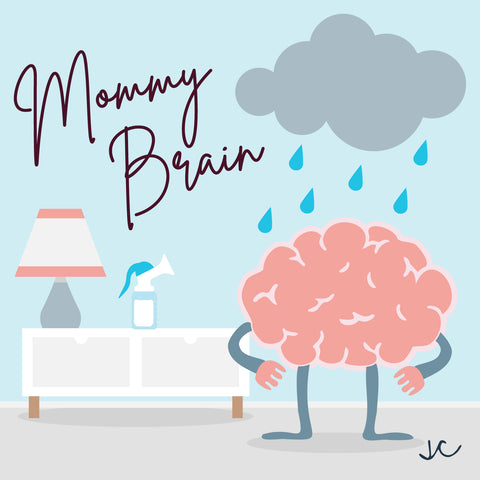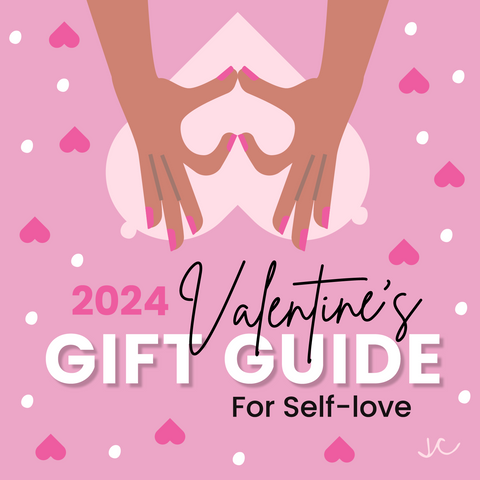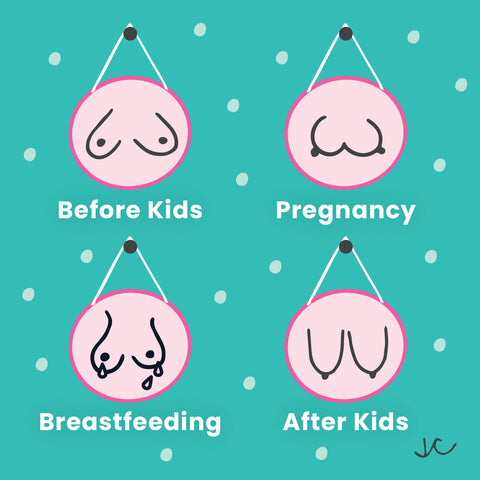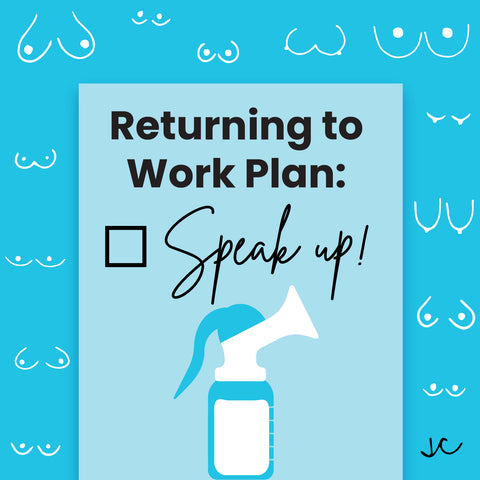How Do I Know If I Have Mastitis And What Should I Do?

Estimated read time: 12 minutes
Titty City's Essential Guide to Mastitis
We all know that breastfeeding comes with its fair share of challenges (they don’t call it a breastfeeding JOURNEY for nothing!)
One of these challenges is mastitis, and while not every breastfeeding mama experiences it, approximately 10% of mamas in the USA get it, and 30% of mothers worldwide.
But what is mastitis, and is there anything you can do to help prevent it?
In our essential guide to mastitis, we’ll look at everything you need to know, including what signs of mastitis to look for, when to get help, and how you can look after your Pretty Titties to keep your breastfeeding journey going strong.
What is mastitis?
Mastitis is a condition where your breast tissue becomes swollen or inflamed. Typically, it’s caused by an infection in the milk ducts and it pretty much mainly affects women who are breastfeeding (lactation mastitis). It can occur in women who aren’t breastfeeding, and even in men, but today, we’re looking at lactation mastitis.
Here’s the thing. Mastitis can occur even when there is no infection present, however, if it’s left untreated, it can cause the formation of an abscess, which is a localized collection of pus (infection) within the breast tissue.

What causes mastitis?
Mastitis is usually caused by a couple of things. And it’s important to remember that it is not your fault if you do develop mastitis mama. It’s just one of those things that can come part and parcel with breastfeeding.
-
Obstruction of a milk duct
Your milk ducts are responsible for carrying your milk down from your breast glands to your beautiful nipples. However, if one of your ducts gets blocked, your milk will build up and cause inflammation, which can result in mastitis or an infection. This can happen if your breast isn’t completely empty after a feed.
-
Bacterial infection
It’s totally normal for bacteria to be on your skin. But, if bacteria breaks through your skin (such as from cracked or broken skin on your nipples), it can result in mastitis.
Mastitis Symptoms
How do you know if you have mastitis?
There are several symptoms of mastitis, so let’s have a look at what these are:
- Itching over your breast
- Swelling or engorgement
- Thickening of your breast tissue or a breast lump
- Pain or a burning sensation (either continuously or while nursing)
- Redness in a particular area (or sometimes over a large part of your Boob)
- Tenderness or pain when touched
- A sensation of warmth in the affected area
- Tenderness under your arm
- Sore, red, or cracked nipples
- Feeling tired and run down (welcome to motherhood, right?)
Mastitis can also be accompanied by a fever and flu-like symptoms. You should always see your doctor if the symptoms are concerning you or getting worse.
What does mastitis look like?
If you have mastitis, it can look like a red or pink patch on your Boobie. This patch might feel warm (or even hot) and tender and painful to the touch. It can also make your Boob look swollen or larger than usual and cause a wedge-shaped lump or hard area in your breast.
If you have black or brown skin, the red area might be harder to see, but if you’re experiencing pain, warmth, and feeling unwell, it’s a good idea to head to your doctor.
How long does mastitis last?
The good news is, if you catch the early symptoms of mastitis, it can be pretty quick and easy to treat.
You know your body best. If the discomfort and other symptoms get progressively worse and continue for more than a few days, speak to your healthcare provider to get treatment for your mastitis.
Mastitis Treatment
How do you treat mastitis?
Sometimes, breast infections like mastitis can clear up on their own.
If you’ve noticed some mastitis symptoms, you can try nursing or pumping from the affected Boobie every two hours, or more frequently if you wish. Doing this will keep your milk flowing and can prevent your Titties from getting too full. If there is a small blockage, it can also help clear it.
You can also try applying warm compresses to your breast and standing under a warm shower and gently massaging your brave Boobie. This is especially beneficial before your next feed or pump shesh to help relieve the discomfort. After feeds, make sure that any leftover milk is drained by expressing by hand or with a pump.
However, if your symptoms are bad or getting worse, and you’re finding breastfeeding too painful, then you need to make an appointment with your doctor. They can help treat your mastitis to make your pretty Titties feel better again.
Treatment for mastitis usually entails a 10 - 14 day course of antibiotics. It’s important to remember that even if you feel better after a couple of days you continue the course of antibiotics to minimize your chance of recurrence.
Your doc might also recommend mild pain relievers to help with the discomfort and to bring your fever down if you have a temperature. It’s also possible that your doctor will check your breastfeeding positioning to make sure your little one’s latch is correct and that your Boobies are being fully drained.
Self-care is also super important mama. Make sure you get plenty of rest and drink lots of fluids. We know this is easier said than done when you have a baby (and possibly other children) to care for, but get all the help and support you can from your partner, friends, and family. Mamas need looking after too. Never forget that.
If you feel like you need ongoing support with your breastfeeding journey, it might be a good idea to find a location consultant, who can offer advice and answer any questions or concerns you might have.
Can you prevent mastitis?
Mastitis can happen to any woman, but it’s more common during the first six months of breastfeeding as your supply establishes itself.
Mastitis can happen due to a blockage in your milk duct or if bacteria enters your breast through a cracked or sore nipple (ouch!)
But the big question is, can you prevent mastitis?
There are some ways you can help reduce the risk of developing an infection, so if you’re wondering how to prevent mastitis, these tips might help.
- Drink tons - breastfeeding can make you super thirsty and keeping hydrated can help keep your Titties in good condition.
- Nursing on-demand - breastfeeding regularly and routinely can prevent milk from building up and keep your Milk Makers flowing.
- Don’t favor one over the other - alternate which Boob you offer first at every feed.
- Pump if you need to - if you know you won’t be able to nurse when you normally do, pump instead and store your milk. Blockages can happen if your Boobies become engorged.
- Switch up your position - using different positions can help drain all areas of your Tits. Always make sure you and your little one are aligned correctly so they latch onto your areola and not your nipple.
- Ditch restrictive bras - choose one that is comfy and doesn’t dig in.
- Treat your nipples like the jewels they are - use a nipple cream to keep them smooth and soothed, air-dry them after each feed, and always speak to your lactation consultant if they get sore or cracked.
If you’re thinking about weaning your little one, the trick is to do it slowly and gently. If you stop cold turkey you run the risk of getting a blockage, which could lead to an infection. We’ve written a guide on how to stop breastfeeding safely, which you can read here.
Breastfeeding with Mastitis
So your pretty Titties are feeling sore and tender, and you’ve been told you have mastitis. We know the last thing you might feel like doing right now is breastfeeding.
But the fact is, when wondering can you breastfeed with mastitis, the answer is a big ‘ol YES.
In fact, the best thing you can do when you have mastitis is to continue breastfeeding. If you can cope with the discomfort, having your baby continue to breastfeed can help clear the infection, and help reduce the pain as the blockage disaperates. It can even help clear up the infection, and it won’t harm your little one (although it might make your milk taste a little salty).
We know it can be very painful, but if you stop breastfeeding or pumping, you run the risk of the blockage in your Boob getting worse. If it’s too painful or your little one is refusing to nurse on the breast, you can try pumping or hand-expressing some milk to relieve the pressure.
You’re strong as a mother
And we think you’re the Tits, mama.
Mastitis can be part of your breastfeeding journey, but now you know how to spot it, help it, and when to seek help, you can help your magical Milk Makers feel better.
Always remember, if you have any concerns then please speak to your healthcare provider for further advice. You’ve got this mama. And we’re so proud of you and how strong you are.
At Titty City Design, we believe that every boobie is beautiful, and that should be celebrated. We are a female-owned and operated, small business here to spread self-love and body positivity with our line of boob apparel, boob accessories, and boob-themed decor and products for the home. A portion of our proceeds goes to help support postpartum people and breast cancer patients.
Unique Gifts for New Moms They Will Love
















